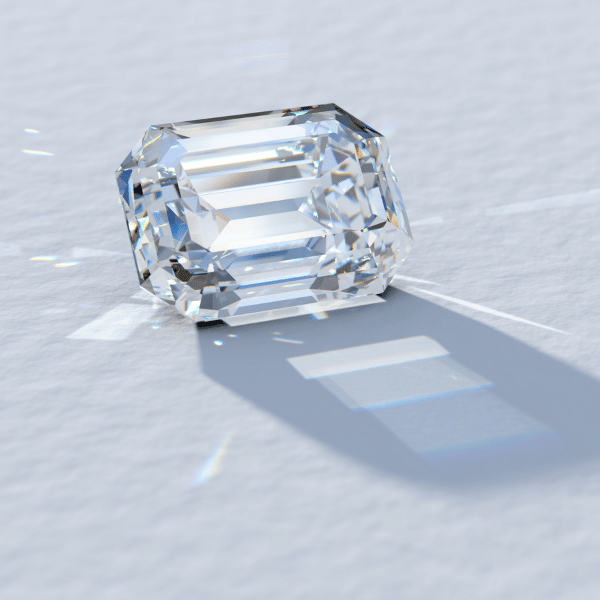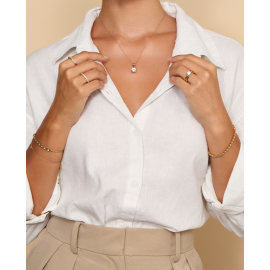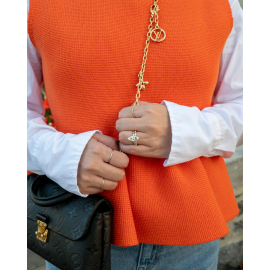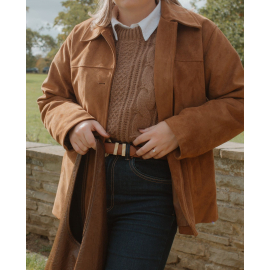Price match guarantee

We’ve teamed up with Klarna to provide flexible payment options, allowing you to shop the way you want. With Klarna, you can split your payment into 3 instalments or choose to pay later, making your shopping experience smoother and more convenient. Your order total must be between £100 and £499 to qualify.

We’ve teamed up with Klarna to provide flexible payment options, allowing you to shop the way you want. With Klarna, you can split your payment into 3 instalments or choose to pay later, making your shopping experience smoother and more convenient. Your order total must be between £100 and £499 to qualify.

August 04, 2022 | by Admin
It is law within the UK that every item of precious metal sold such as Platinum, Gold, Silver is stamped labelling the item with the type of metal it is. Platinum pieces which weigh less than 0.5 grams, 18ct Gold and Palladium pieces weighing less than 1.0 gram and Silver pieces weighing less than 7.78 grams are except from hallmark.
At Diamonds Factory all our products are hallmarked as per UK hallmarking law from London Assay Office (The GoldSmith Company)
The Goldsmiths' Company Assay Office is the oldest assay office in the United Kingdom. It has provided hallmarking services since The Goldsmiths' Company was founded in the 1300s. The company received its royal charter in 1327 and ranks 5th in order of precedence of the 12 Great Livery Companies of the City of London.
Hallmarking dates back to the 1300s when Edward I of England passed a law requiring any item made of silver, which was offered for sale, to be at least of equal quality as that of the coin of the realm (silver currency). The wardens of The Goldsmiths' Company were tasked with visiting workshops in the City of London to assay (test) silver articles. If these articles were found to be below standard they were originally destroyed and the metal forfeited to the King. If they passed, each article received the King's mark of authentication - the mark of a leopard's head. By 1478, there were several hundred workshops and merchants manufacturing silver articles in the City of London. It was not possible for the wardens to visit them all so the merchants were ordered to bring their items to Goldsmiths' Hall for testing and marking and a permanent Assay Office was established in the building. This is the origin of the term hallmark - struck with the King's mark at Goldsmiths' Hall.
In 1544 the Goldsmith's Company adopted the King's mark as their town mark and the mark of the leopard's head is now internationally recognised as the mark of this assay office.
The Goldsmiths's Company Assay Office is still based at Goldsmiths's Hall and remains the oldest company in Britain to be continually trading from the same site. However, it also has two satellite offices; at Greville Street in Hatton Garden in the heart of the London jewellery quarter and within a high security complex near London's Heathrow airport. It now has a new off-site facility within the Dalston-based jewellery manufacturer, Allied Gold. This is the first time in the Assay Office's 700 year history that it has opened permanent hallmarking services on a customer's premises.
In addition to hallmarking, the office has now expanded its range of services to support the jewellery trade and enforcement authorities. It offers a variety of specialist analytical services including nickel, lead & cadmium testing, antique silver dating, non-destructive compositional analysis, plating thickness measurement and a melt and assay service for scrap precious metal carried out in their fully independent on-site laboratory. Other services offered are a jewellery valuation service, laser marking, trading standards assistance, high quality photography and a comprehensive range of training and educational seminars, lectures and specialist events.






If you’re considering buying an emerald cut engagement ring for your future spouse, we’ve put together this useful guide which explores the interesting history of the emerald cut as well as what differentiates it from others and beautiful emerald cut styles to choose from.What is an Emerald-Cut Engagement Ring?
An emerald-cut diamond is typically rectangular with cut corners, although you can get square emerald-cut diamonds, too. With around 57 straight facets and an elongated shape, this diamond will produce flashes of both white and coloured light, rather than brilliance and sparkle, to create the mirrored effect it’s so well known for.
Because of its shape, the emerald cut is thought of as a flattering style of engagement ring as it helps create a slender effect on the finger. It’s also ideal for someone wanting a larger stone without the higher price point, as its surface area often appears bigger than other diamond shapes of the same carat.The History of Emerald-Cut Engagement Rings
Having been around for centuries, the emerald cut diamond is one of the oldest shapes that are still just as popular today. This cut originates back to the 1500s when stonecutters would cut emerald gemstones into a rectangular shape. They used this cut for emeralds, as it helped to reduce the pressure during the cutting process. So, it prevented any chips from happening in the stone. Diamond cutters very quickly picked up on this technique and adopted it themselves, in order to achieve chip-free, smooth diamonds.
In the 1920s, the term ‘emerald cut’ was given to this diamond shape as it saw a rise in popularity. In an era where clean lines and symmetry were in fashion, the emerald cut diamond fit right in and was often chosen for engagement rings and earrings too. Since then, they have remained in the limelight and have a classic, vintage look and feel, which is admired and sought after by many.The Meaning Behind Emerald-Cut Engagement Rings
With its bold appearance, an emerald-cut diamond is often suited to those who enjoy flashy and exuberant fashion choices. This style of diamond was made for people who like to stand out from the crowd and exude both drama, class and confidence. Because of its large surface face, it’s believed that wearers of an emerald cut have an open heart. And, since the emerald cut will highlight the clarity of the stone better than other shapes, it's said to reflect this in its owner as well.Differences Between Emerald-Cut and Emerald Stone Engagement Rings
Oftentimes, we see many people confused about the differences between emerald cut diamonds and emerald stones themselves. As the emerald cut was initially created for emeralds, it’s easy to understand where the confusion comes from. However, as mentioned above, the emerald cut is a rectangular shape with cropped corners that are suited to a wide variety of gemstones. Whereas, an emerald stone, is a gorgeous green gemstone that’s used in a variety of jewellery pieces, from rings and pendants to earrings and bracelets.
Emerald gemstones are known for being a very soft, fragile stone, earning itself a 7.5 to 8 on the Mohs scale of hardness, whereas a diamond scores a 10, which makes it one of the hardest substances on earth. While it’s possible to have an emerald engagement ring, be mindful of the fact that it's a delicate stone, so we recommend not wearing it in bed, while gardening, in the gym or anywhere it could get damaged easily.Popular Emerald-Cut Engagement Ring Styles
From Elizabeth Taylor and Grace Kelly to Amal Clooney and Paris Hilton, it’s no secret that celebrities love to flaunt their stunning emerald-cut engagement rings, so you’ll be in good company! While some of these celebrity emerald cut engagement rings are flashier than others, they all have their own distinct styles that suit their personality. Here are some of the most popular emerald-cut engagement ring styles to consider:1. Solitaire Emerald-Cut Engagement Ring

A solitaire is a classic style of engagement ring that will showcase the unique character of an emerald-cut diamond perfectly as it puts all the emphasis on the stone. This type of style will never go out of style and is ideal for those who like a minimalistic style.2. Three Stone Emerald-Cut Engagement Ring

Three stone emerald-cut engagement ring styles are a very popular choice - especially in America. With two smaller stones flanking the main stone in the middle, it helps to draw attention to the centre stone and makes it shine even brighter. When it comes to marriage, three-stone engagement rings also represent the past, present and future of a relationship, making it an ultra-romantic style.3. Halo Emerald-Cut Engagement Ring

As emerald-cut engagement rings don’t sparkle as much as other shapes, if your partner wants the best of both worlds, then a halo-style emerald-cut ring is the solution. A halo ring will feature the emerald cut stone in the centre surrounded by smaller stones to provide a dazzling sparkle. This type of ring will certainly be eye-catching and can help make the centre stone really pop.4. Pave Emerald-Cut Engagement Ring

If you’re worried about a halo setting taking away from the beauty of the emerald-cut stone, then a pave-style ring may be better suited. A pave-style ring features small accent diamonds along the band of the ring, with tiny beads setting the stones securely in place and making it seem as though there even are more diamonds. This style helps to add sparkle without taking the attention away from the main stone, which is elevated above the dazzling band.
If you’re thinking of proposing to your partner in the near future, take a look at our complete guide on getting engaged for all the tips and tricks you need to ensure it goes smoothly.